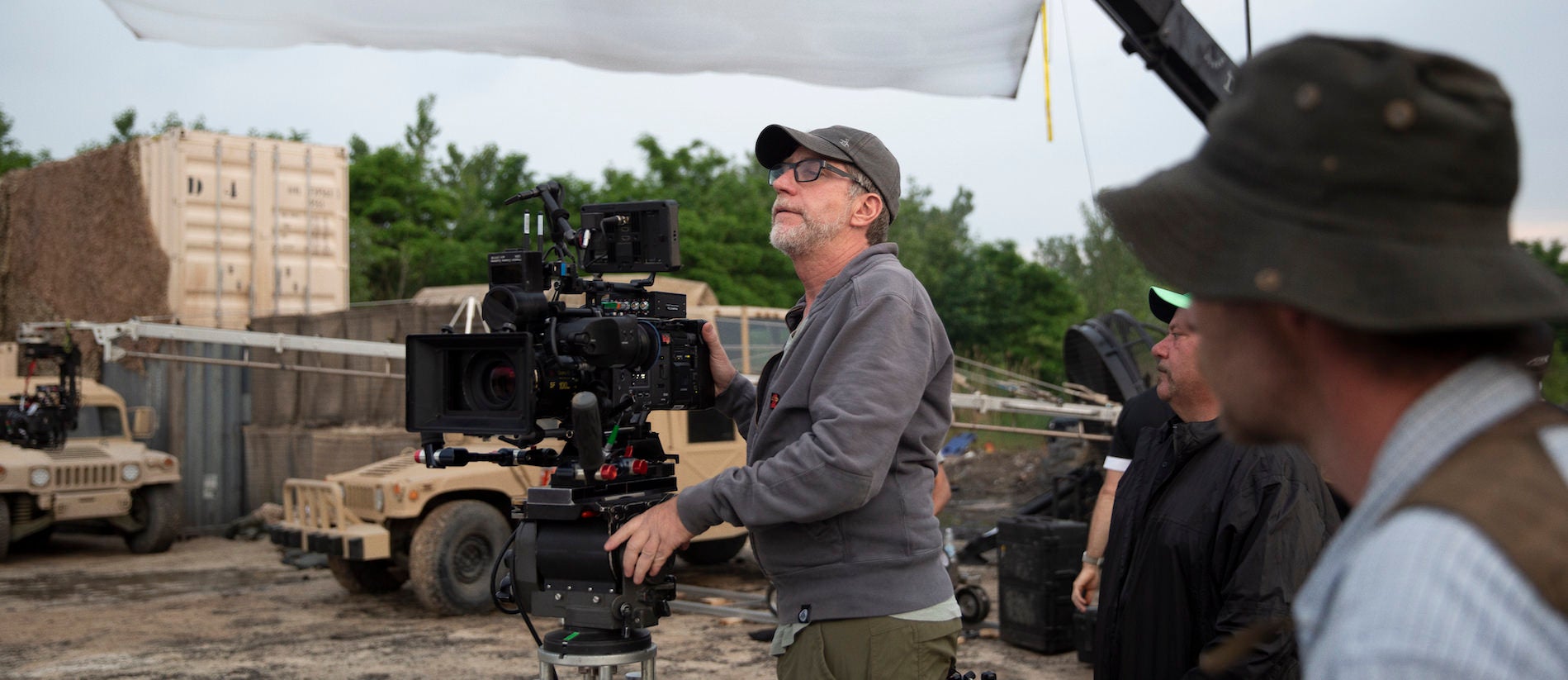
12-27-2022 - Case Study
Shot on VENICE: Behind-the-scenes of Filming Outrageous Scenes from Season 3 of 'The Boys'
By: SonyCine Team
Daniel Stoloff has photographed some of the most absurd scenes in streaming history.
How does he make them work? By grounding satire, in reality, to make it feel familiar.
From the outside, The Boys is an edgy show about superheroes. But it's also a bonkers button-pusher that consistently delivers satire and social commentary on anything from race relations, fake news, and political figures.
We dare you to find a more absurd yet realistic show out there. From a cinematography perspective, it's incredibly creative.
"From the beginning, my experience on The Boys has never changed," explains Daniel Stoloff to SonyCine. "[Show Creator] Eric Kripke's main note was, 'I want it grounded. Everything should look real like it's actually happening.'"
"On every level, and this goes for not just the photography, but the performances, music, and the production design, everything should be grounded and believable for the show to work, for the satire to work. The world that has been created, the world of Vought, exists aesthetically in our normal every day."
Now, this doesn't mean making The Boys look like a documentary. Instead, the most effective tool used by Stoloff was lighting each scene based on a real-life scenario. And sometimes, it means employing natural light. "When we have a character walking down the street, it's not bathed in backlight. It's natural and grounded."
But at other times, it requires an extreme variety of filmmaking tactics, from recreating 1980s action movies to a realistic newsroom. Here, realism makes satire. Stoloff took a customized approach to each scene to make it all work. For example, for the "not my dolphin" sequence, Stoloff played with a movie-of-the-week theme.
"That was really fun to shoot because suddenly, I put on my low-budget movie-of-the-week hat. I lit everything a little cheesy with lots of color on the light," says Stoloff. "That's not natural, but it is in the sense that it's trying to recreate that world."
Another example would be how Stoloff handles TV interviews in the newsroom. "We attempted to make it look exactly like a Fox News show, which is just a big bath of light. I consider that naturalistic because it's reflective of what those things are."
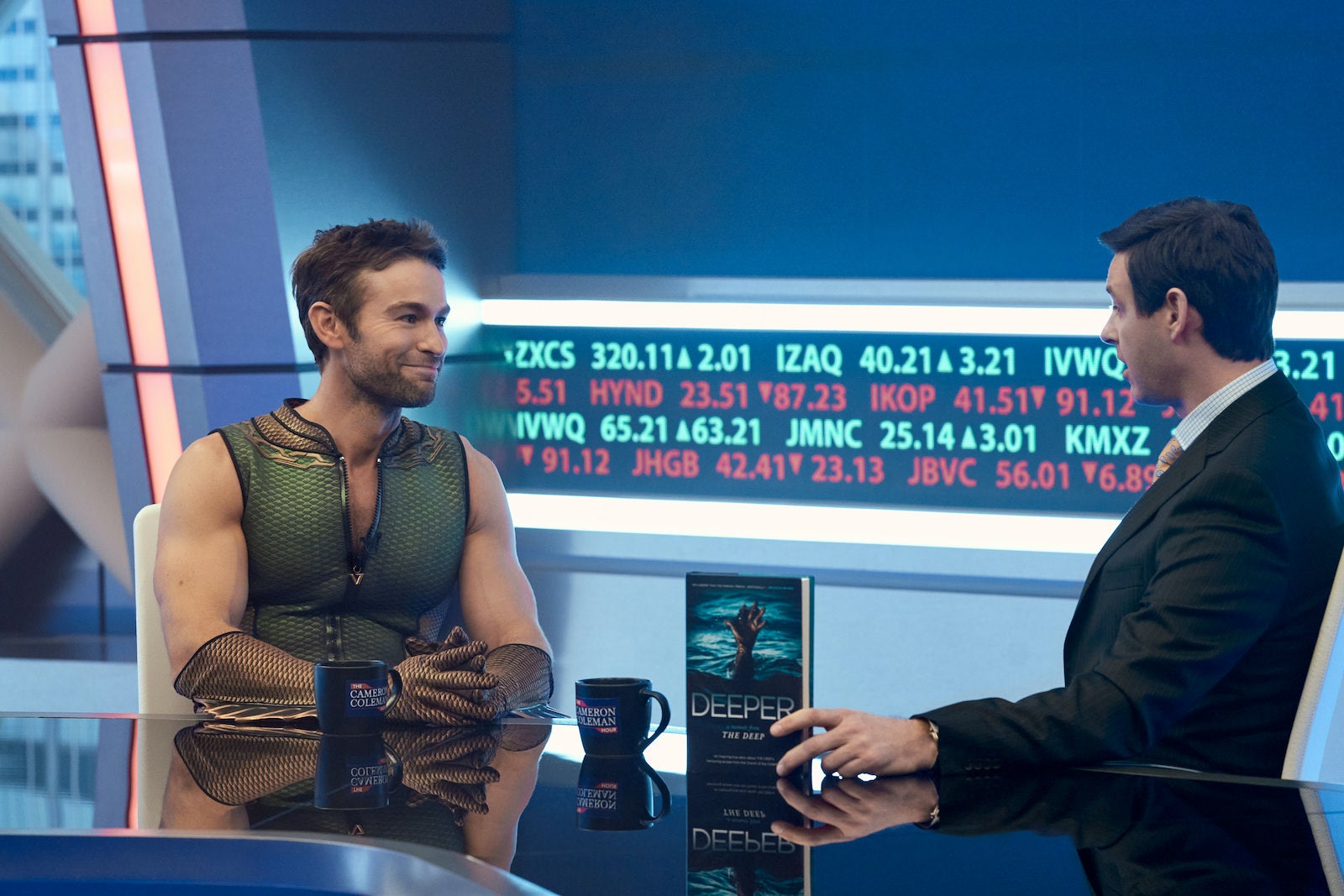
It's not always referencing a certain type of media. Instead, a lot of the time, it's bringing familiar lighting to otherwise otherworldly moments of the show, like this scene where Homelander looks into the mirror, and his reflection talks back to him.
"I wanted that to feel like early evening and natural," explains Stoloff. "The only real light is coming from the window, and then there's a little warmth on the fill side. I consider the whole thing very naturalistic, from that standpoint."
Why the Sony VENICE was the right choice for The Boys because of its elastic nature
The primary world of The Boys was shot with the Sony VENICE with Cooke SF Anamorphic Lenses. Stoloff came to the show starting in Season Two. "I inherited the VENICE," explains Stoloff. "But I was happy about it. I love the camera. I think the VENICE has such a wonderful capability of looking cinematic and so filmic. One of the reasons why I love the VENICE so much is because it can do anything. It can look like a Hallmark movie, or it can look like a movie from 1982 or something from the future. It's a very elastic tool."
One example of how the VENICE performed in creating vastly different looks on The Boys is the musical number with Frenchie and Kimiko in the hospital.
"That scene was trying to have a 1950s Technicolor kind of vibe, which is so different from anything else in the hospital or in the show," explains Stoloff. "The camera did a spectacular job of imitating that look."
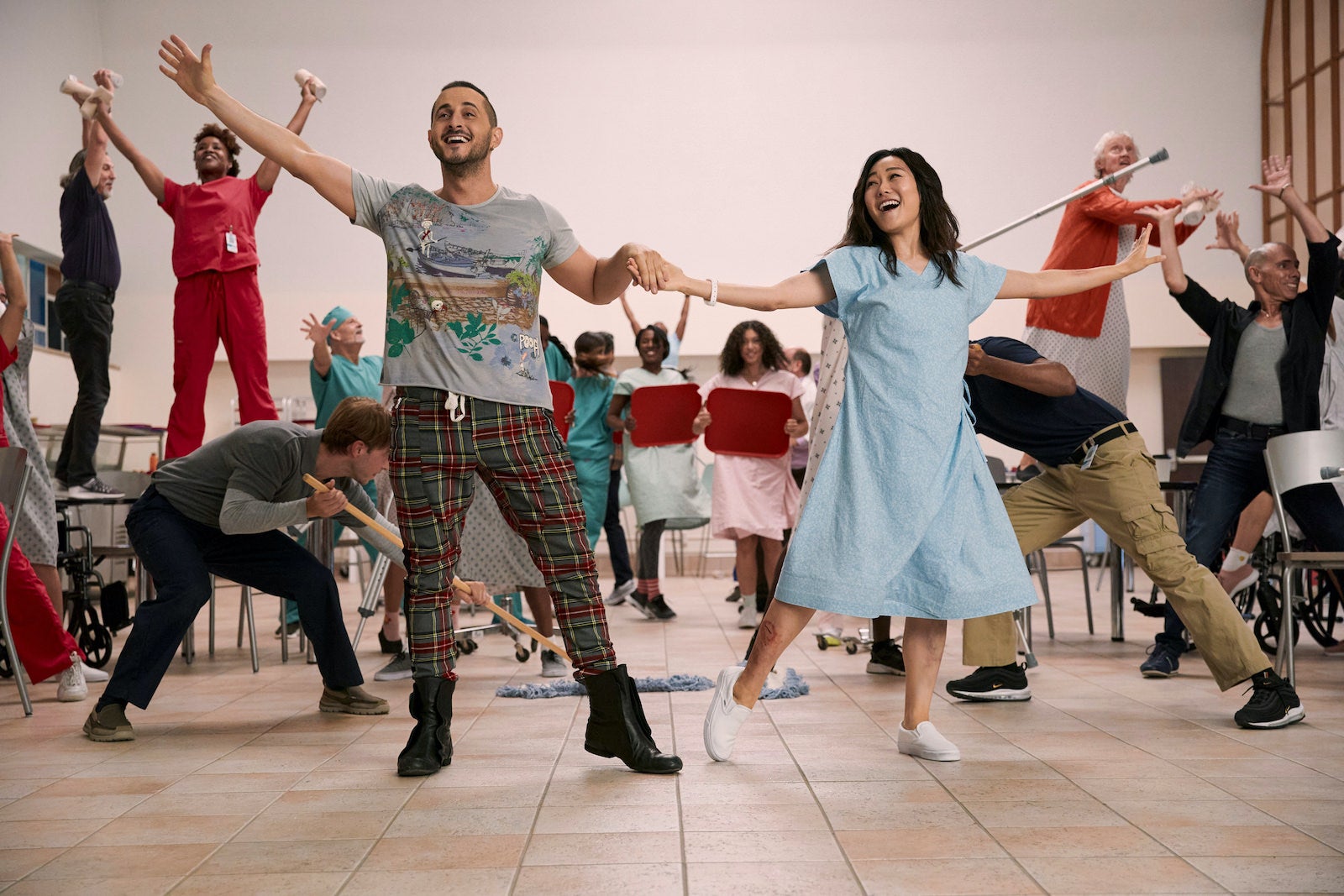
"When you compare that scene to the scene where Frenchie's being tortured, it's the same camera, but it looks like a totally different world. The warehouse scene was very de-saturated. It had a very tobacco-ey look, with darkness and bright shafts of light coming through. Those two scenes could not be more visually different, and yet it was done with the same camera and so little effort. We used our standard LUT in the warehouse and then beefed it up for the song and dance."
The realities of filming inside...a giant penis!
Each season, The Boys has consistently lived up to its promise of bringing more outrageous, inventive moments to the show. In Season Three, Stoloff encountered a one-of-a-kind cinematography challenge: filming inside an 11-foot high, 30-foot long three-dimensional urethra.
"It's not like you can Google 'how do you shoot inside of urethra?'" jokes Stoloff. "It was my favorite kind of rig because it was a high-tech, low-tech solution. When the urethra was built, I asked them to leave a groove at the top that ran the whole way and was about eight inches wide. VFX, headed by the fantastic Stephan Fleet, filled it in by the time the audience saw it. But in that groove, I had a pipe hanging down with a VENICE in a cage. Above, it was very simple: an I-beam with rollers on it. I had a clothesline rig, and we actually had grips on either side pulling the clothesline to pull the rig through. It was the kind of thing that I drew on a napkin, and I gave it to our rigging grip Walter Lipscombe and said, "Build this." He made it a thousand times better than my napkin drawing.
I could do a boom if I wanted to because I didn't exactly know what the performer was going to do once we got in there. That's the kind of thing that I really love. That sort of figure-it-out-as-you-go, take a wheelchair and turn into a dolly sort of stuff."
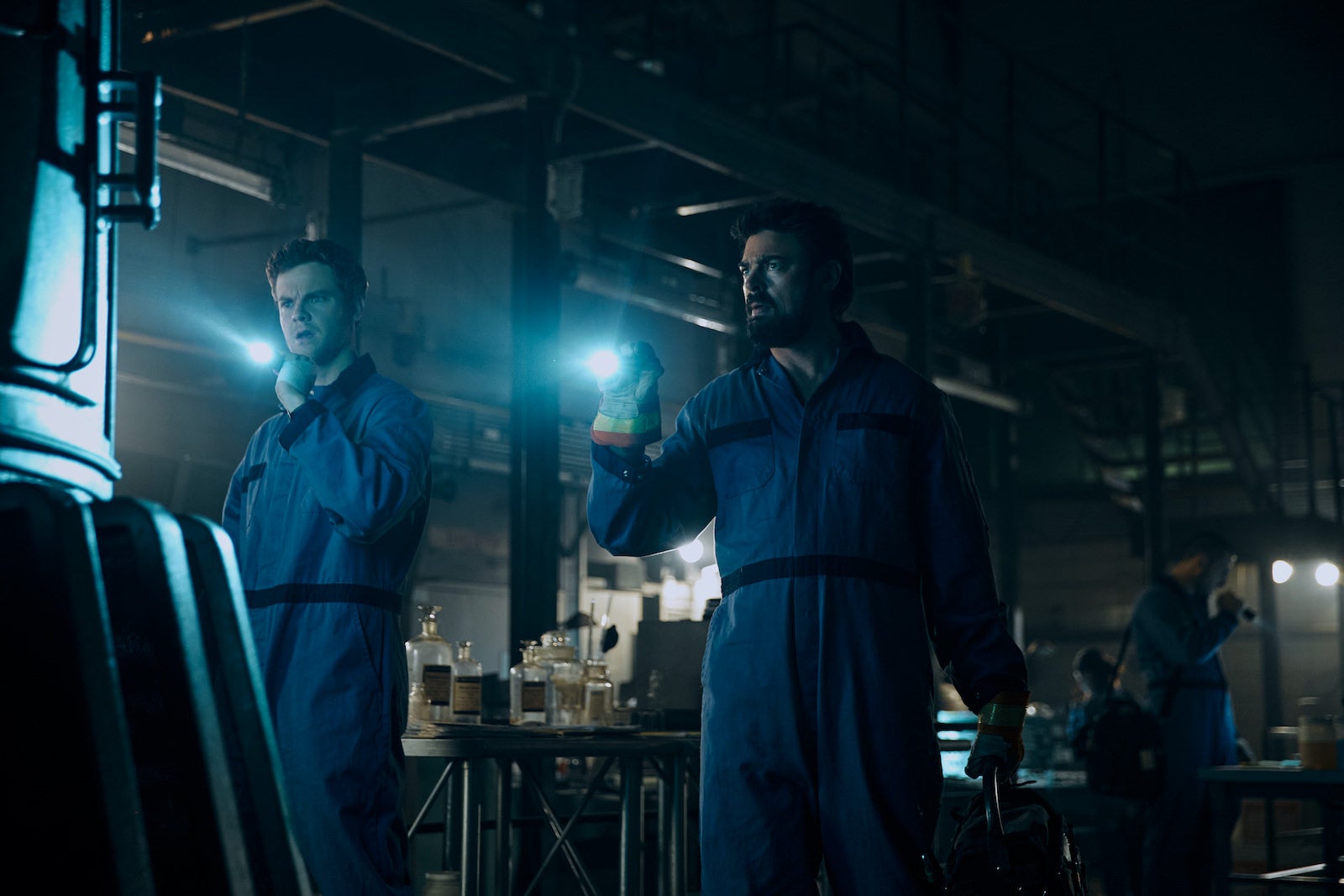
Example of grounded lighting (and one of Stoloff's favorite looks)
While Stoloff recognizes many of the big set pieces as having achieved a lot this season, his favorite look was a simpler moment: the motel room when Soldier Boy wakes up.
"I just loved the way that looked," says Stoloff. "It was lit so simply. I had light coming in from two windows, and then I used a lot of white duvetyn. I would place it wherever the camera wasn't seeing, and that would reflect whatever ambient light was there. So I would use that on the off-camera side. And then on-camera side, I would use negative fill, so I would use black. I had almost no lights inside the set, and I'm really pleased with the way that scene looks.
And it was quick to move around the room. Once you don't have flags in your way, you can really fly through. The VENICE does a great job of seeing the way that your eye sees. Generally, I light by eye, and then I look at the monitor and make adjustments. I'm trying to program my own eyes, my brain, to see like the camera sees, so I have to do less after. But I feel like the VENICE sees very much like the eye sees."
For Stoloff, a consistent goal is to bring character to the Cooke SF Anamorphic lenses, which often means shooting wide open.
"Another great thing about the VENICE, aside from its color and resolution, is the single-stop ND. I shoot wide open whenever I can, particularly with these lenses. They get more fucked-up wide open, and I always want that. When you're constantly trying to get yourself wide open, a two-stop filter wheel is not that useful. If you have to put an N3 in front of it, it defeats the purpose. Having that single stop was a huge time-saver. And I'm shooting with three cameras, so things are happening so fast that something like calling for an ND filter on another camera suddenly means nine people are busy running around the place when you could just be pushing a button [with the Sony VENICE]. Those minutes really add up."
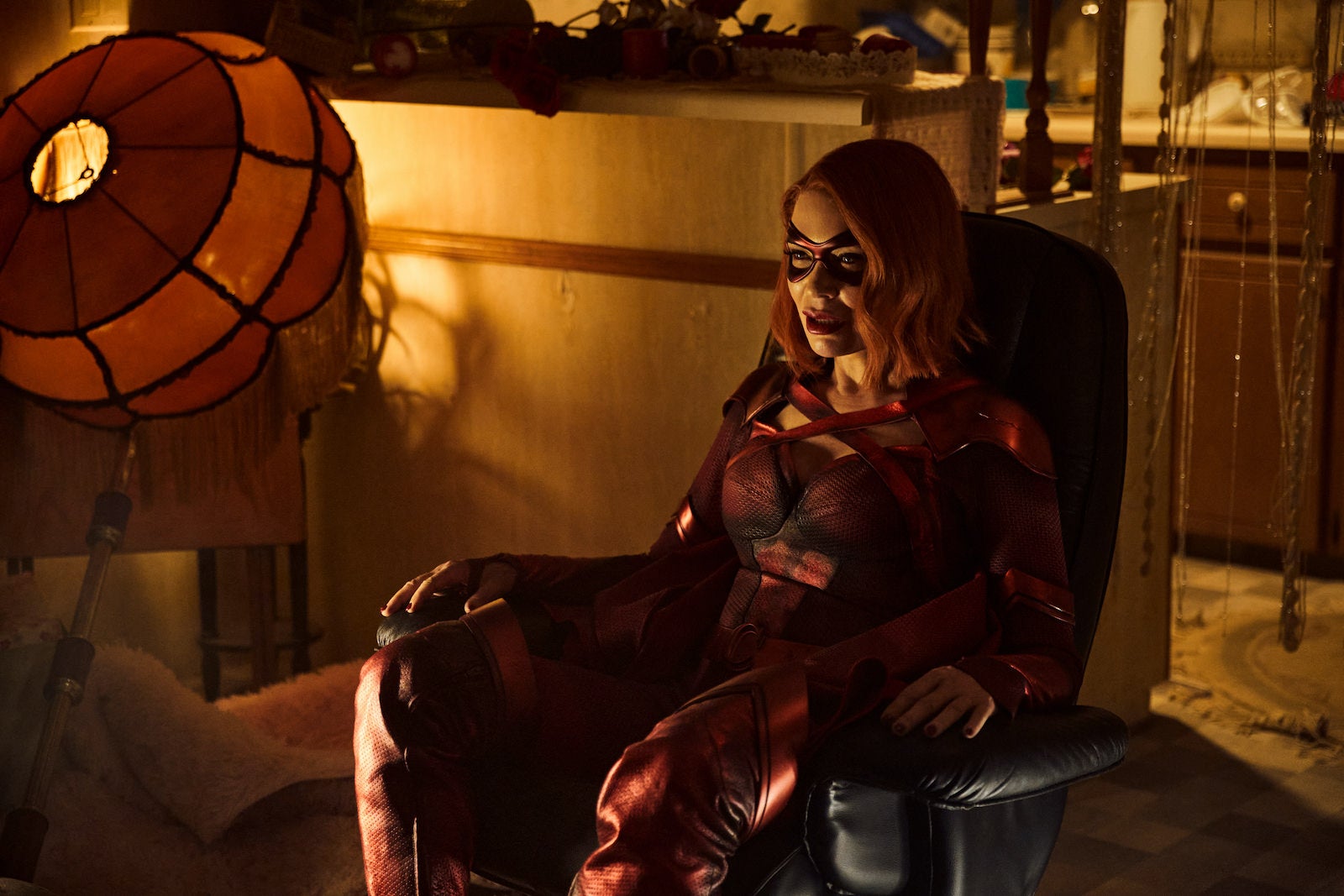
The real excitement happens when you throw your shotlist out the window
For big set pieces, Stoloff and the production team would use storyboards. If big stunts are involved, stunt coordinator John Koyama will come in.
"We do these amazing Previs videos with his stunt team," says Stoloff. "A good stunt coordinator like John Koyama always knows where the camera should be. I have no problem saying, 'John, where should I put the camera for this punch?' And he and I agreed on pretty much everything."
But while Stoloff explains that there's a ton of prep on this kind of show, and every scene is discussed, you always have to leave room for the unexpected.
"I am not a huge fan of shot-listing every shot," Stoloff reveals. "The energy is different in prep. You're just sitting in a room with fluorescent lights. But once you're on set, the adrenaline starts flowing, and actors are acting, and there's attention. That's where I get my best ideas. That's when all the creative juices in the room are flowing between the performers, the director, and the DP. It's my favorite part of the process: when that rehearsal's over, and everyone's eyes look at you, "Well, what are we going to do?" I love that moment.
I didn't always love it. For many years, it was the most terrifying thing. But then, with a little more time under my belt, I grew to love that and to look forward to that moment of pressure.
How to avoid the avalanche of anxiety that can plague any cinematographer
From superhero fight scenes to urethra camera cages, this season of The Boys has had some of the most challenging sequences a cinematographer can imagine. What is the philosophy that gets Daniel Stoloff through?
"Something that I go back to from time to time when I'm feeling overwhelmed is: you can only do one shot at a time," concludes Stoloff.
"Try not to let yourself get buried in the avalanche of anxiety of all the things that you have to do, and all the things that could go wrong. You look at the set of storyboards, and it may look like a small phone book. There are so many images, and you can let that freak you out. I mean, you read these scripts, and yes, my first reaction is always to be overwhelmed. I'm like, 'How am I possibly going to do this in the time we have to do it?' And it always seems impossible. They're setting us up to fail. And then you just stop, take a deep breath, and say, 'Okay, let's talk about this one shot at a time.'
I think it can work for life, too."
Check out the outrageous antics of supes, and Daniel Stoloff's fantastic cinematography, in Season 3 of The Boys exclusively on Prime Video.




